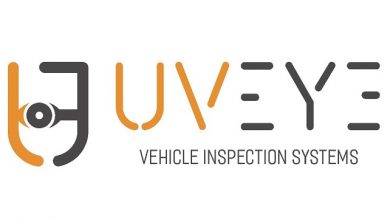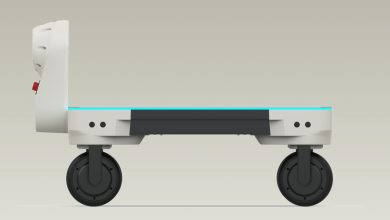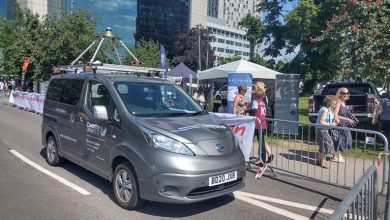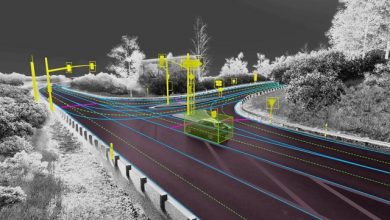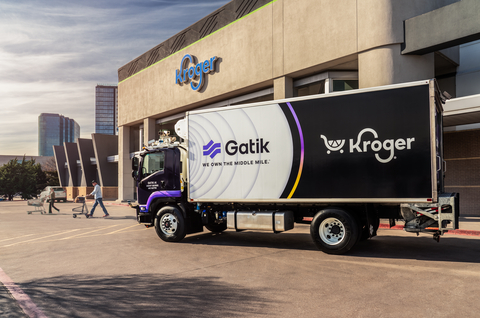DARPA’s RACER achieves breakthrough in autonomous fleet movement
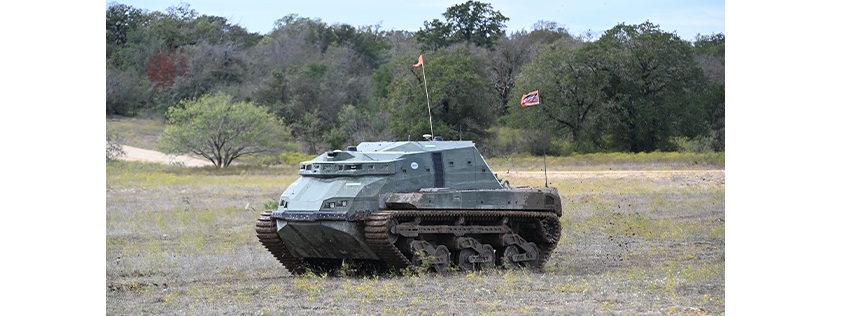
DARPA’s Robotic Autonomy in Complex Environments with Resiliency (RACER) program tested autonomous movement on a new, larger fleet vehicle. The RACER Heavy Platform (RHP) vehicles are 12-ton, 20-foot-long, skid-steer tracked vehicles – similar in size to forthcoming robotic and optionally manned combat/fighting vehicles. The RHPs complement the 2-ton, 11-foot-long, Ackermann-steered, wheeled RACER Fleet Vehicles (RFVs) already in use.
“Having two radically different types of vehicles helps us advance towards RACER’s goal of platform agnostic autonomy in complex, mission-relevant off-road environments that are significantly more unpredictable than on-road conditions,” said Stuart Young, RACER program manager.
“For Phase 2, adding the combat-scale RHP robot supports porting and performance demonstration of RACER autonomy stacks at multiple scales concurrently while moving between highly varied terrains.”
RACER’s second phase began last fall with its fourth experiment (“E4”). This included first testing of RHPs and testing on RFVs by teams from the University of Washington and from NASA’s Jet Propulsion Laboratory. RACER is on pace to continue its autonomy development. It plans to experiment with new rounds of development and testing roughly every six months.
“Our Phase 2 off-road average autonomous speed goals are higher at lower intervention rates, and both RFVs plus now RHPs allow RACER to also show adaptability and resiliency of autonomous software at multiple, platform-agnostic ground robot scales in an array of complex, military-relevant environments,” Young said. “As we also add tactics-based autonomy, we see all of these together as vitally important to Army and Marine needs in robotic vehicle programs of record. These programs closely track RACER and represent possible transition opportunities for the program.”
RACER E4 took place in late 2023 at military training areas in Texas. Using fully unoccupied RFVs, RACER demonstrated autonomous movement within a 15 square mile terrain area including highly diverse ground vegetation cover, trees, bushes, rocks, slopes, obstructed ditches, and creek crossings typical of the varied, complex Texas terrain familiar to armored maneuver. Adaptability was further demonstrated by successful runs at night with equivalent performance results. The two RACER teams lacked prior experience with sensor data sets from the E4 military training areas before. Upon arrival, they received no practice before starting official courses. During the experiment, onsite opportunities allowed for adaptive improvements to autonomy stacks within the allotted time, enhancing their functionality. Teams successfully completed over 30 autonomous runs on courses varying from 3 to 10 miles in length. They achieved over 150 autonomous, unoccupied miles at speeds up to 30 miles per hour.
The RACER program commissioned the RHP at E4. It operated for over 30 miles in an autonomous-route-following-mode over similarly complex terrain. This was to test low-level autonomous control, collect sensor data sets, assess mobility, and refine operations. E4 finally commenced software development for RACER global planning with tactics. Uniformed subject matter experts stationed at the E4 military base were involved in focus groups to define tactical reasoning input.
“RACER’s early Phase 2 activities include Experiment 4 performance successes in difficult, new-to-the-program, military relevant terrain in Texas. Recent incorporation of RHP as a fleet platform is setting the tone for the program to achieve tougher autonomous maneuver goals. This shows autonomy resiliency and adaptability to new environments on any robot at any scale,” said Young.
The RHP utilizes the Textron M5 base platform previously developed and used in U.S. Army campaigns focus on learning for robotic combat vehicle requirements and acquisition. They are upfitted and supported for RACER autonomy integration hardware stacks and software by Carnegie Robotics. The University of Washington and Overland AI are the RACER Phase 2 performer teams. Additionally, NASA’s Jet Propulsion Laboratory, Offroad Autonomy, Georgia Institute of Technology, and Duality Robotics are also participating.
The fall 2023 RACER E4 followed Phase 1 experiments in March 2023 (Ft. Irwin, California), September 2022 (Camp Roberts, California), and March 2022 (Ft. Irwin, California). RACER is planning two experiments in 2024 to keep its every-six-month cadence of field tests to keep robots constantly improving. The two RACER Phase 2 teams will persistently develop and test at various nearby test sites throughout.
This spring marks the 20th anniversary of DARPA’s pathbreaking Grand Challenge, which spurred American ingenuity to accelerate the development of autonomous vehicle technologies that could be applied to military requirements. RACER’s work continues to advance the potential for revolutionary capabilities in autonomy, particularly in complex, off-road environments.

